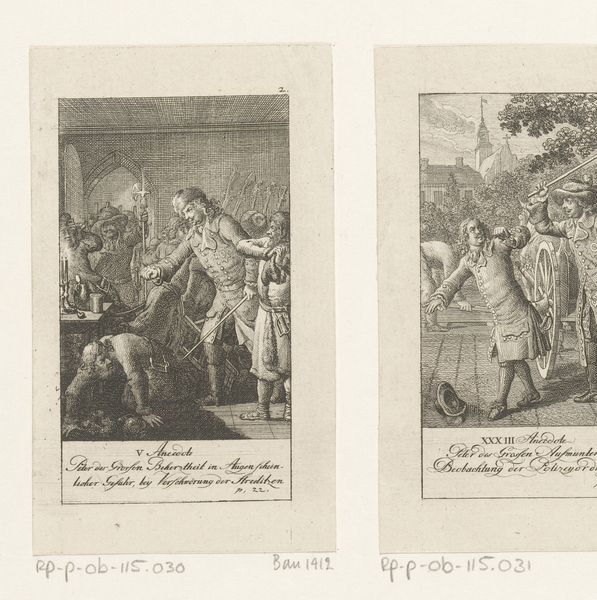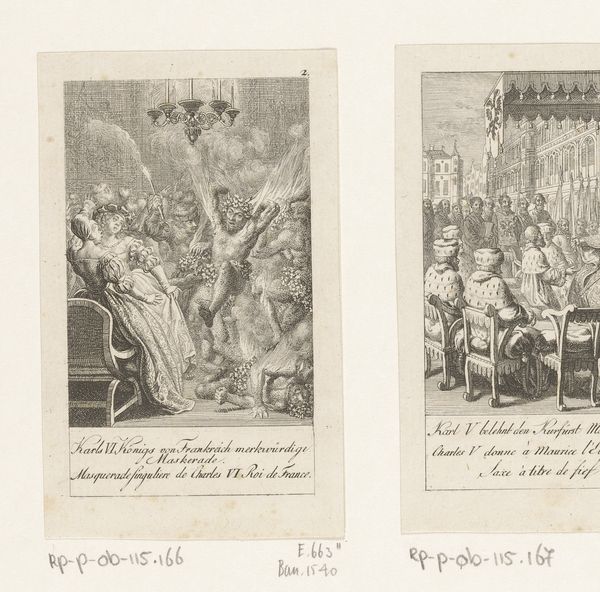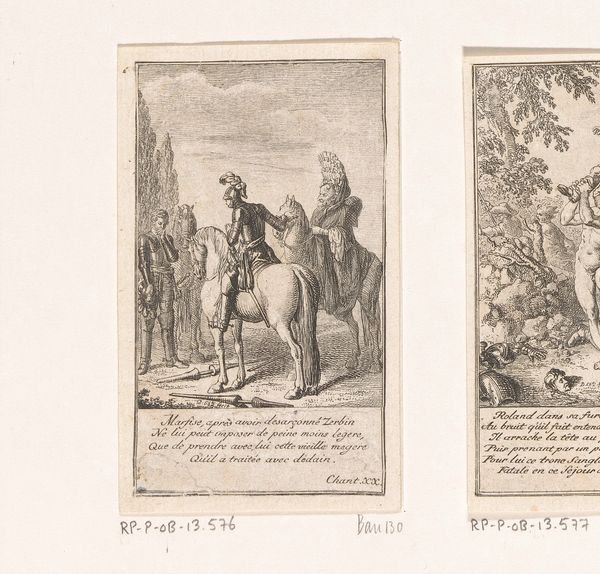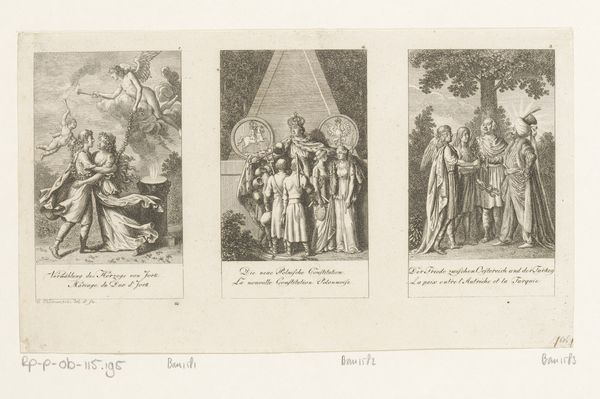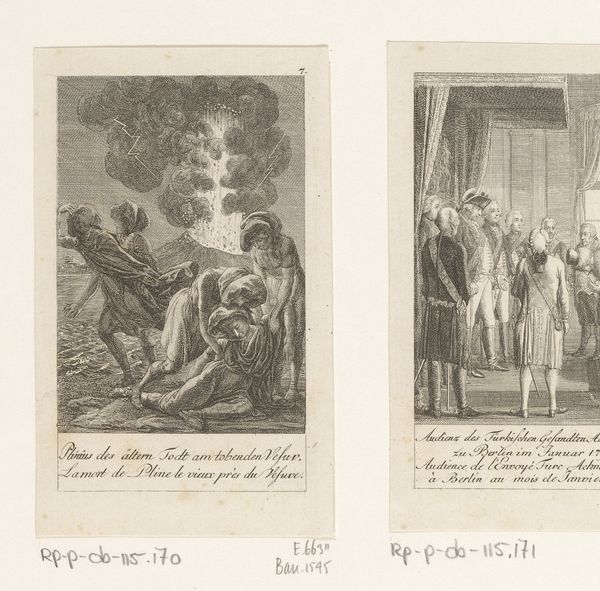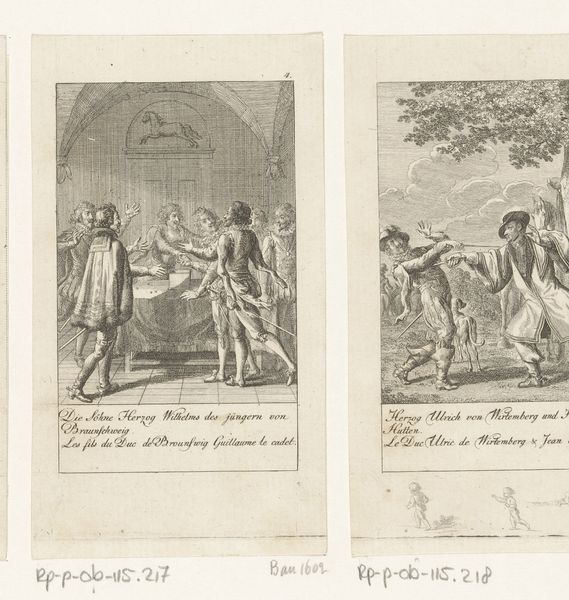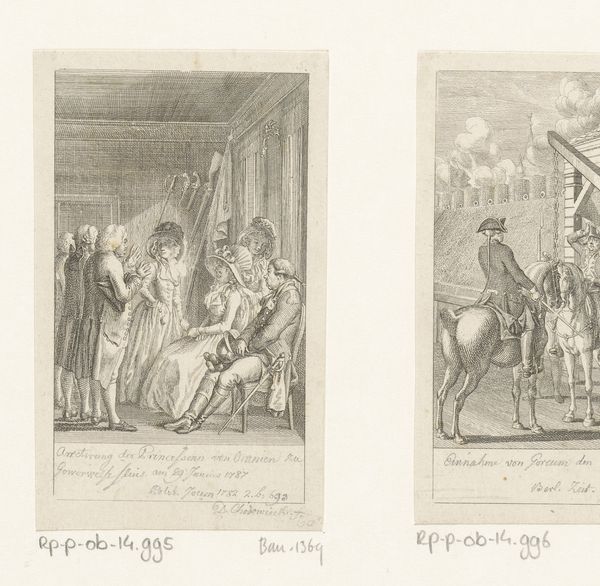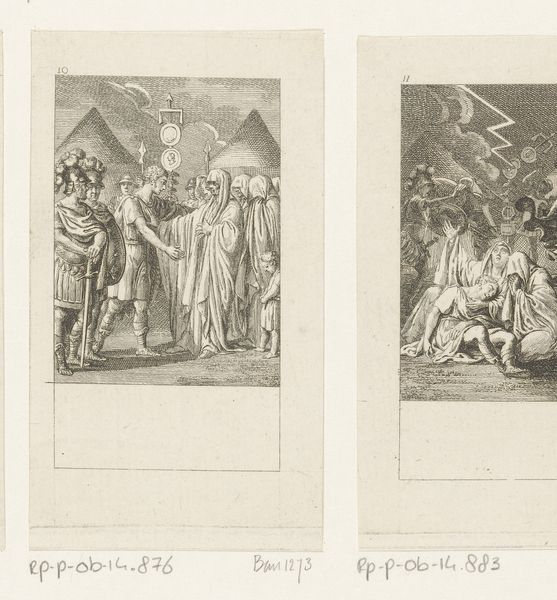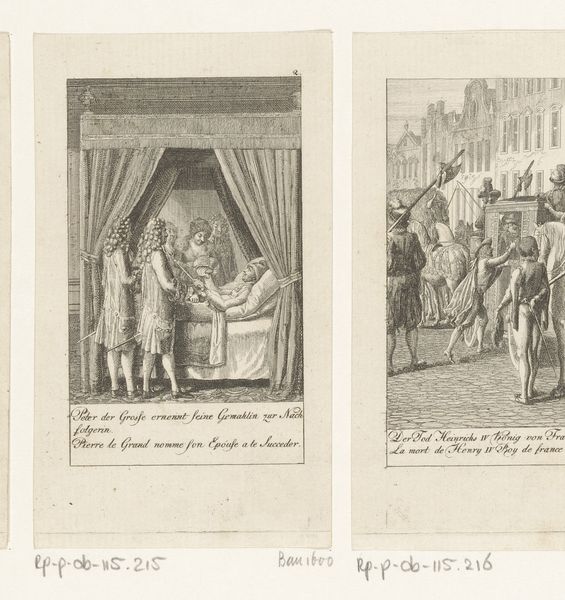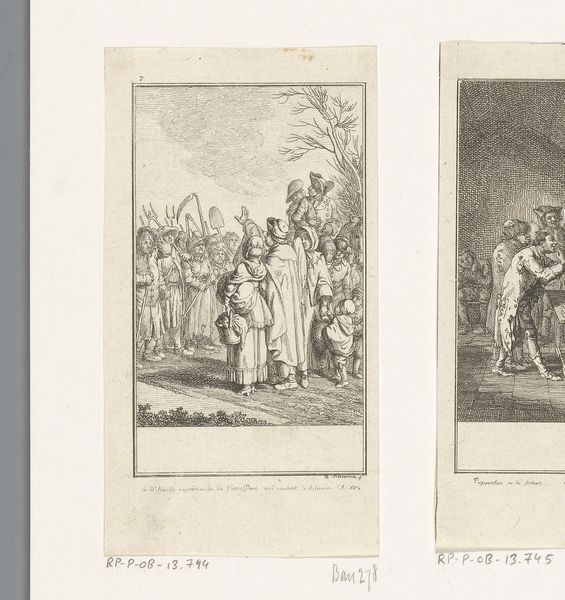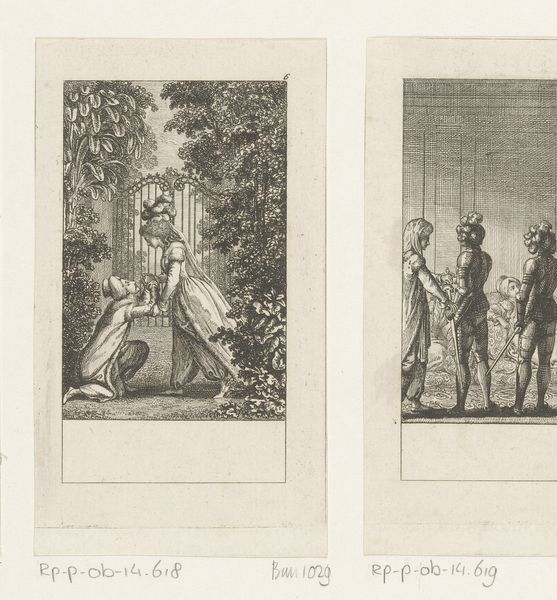
Dimensions: height 100 mm, width 62 mm
Copyright: Rijks Museum: Open Domain
Curator: Here at the Rijksmuseum, we have Daniel Nikolaus Chodowiecki’s “Begrafenis van Karel V”, or "Funeral of Charles V," an engraving from 1791. Editor: What strikes me immediately is the somber atmosphere. The monochrome palette heightens the solemnity, and the elongated figures huddled around the casket emanate a quiet grief. Curator: Absolutely. It’s important to consider that Chodowiecki created this well after Charles V’s actual death in 1558. The image wasn't a firsthand account but rather a reflection on Charles' legacy through a later 18th-century lens. It likely references contemporary social and political tensions. Editor: Placing it within the context of the late 18th century makes me question how this image might participate in broader discourses surrounding power and authority. Was Chodowiecki aiming to critique the role of the monarchy or reflect on mortality and perhaps comment on social unrest, given the imminent French Revolution? Curator: Those are crucial questions. This print engages with Charles V as a historical figure, and its creation coincided with evolving ideas about governance. The choice to depict such a stark scene emphasizes not just the loss of an emperor but possibly a transition in socio-political structures, the power dynamics. Editor: I am intrigued by the central placement of what seems to be a young figure beside the clergy. Is this an allegorical element pointing to a hope of transition, or perhaps more bleakly, a young sacrifice for dynastic power? Curator: The inclusion of a child certainly opens avenues for interpretation concerning inheritance, and future of dynastic legacy. Perhaps, even offering perspectives about vulnerabilities with succession. Editor: The image provides not just an important historical record, but prompts questions on its continuing relevance by highlighting cyclical social patterns. Curator: I find that studying prints such as these offer fascinating access points through time, where we might reconsider critical historical perspectives across complex dialogues of identity, class, and even justice.
Comments
No comments
Be the first to comment and join the conversation on the ultimate creative platform.
